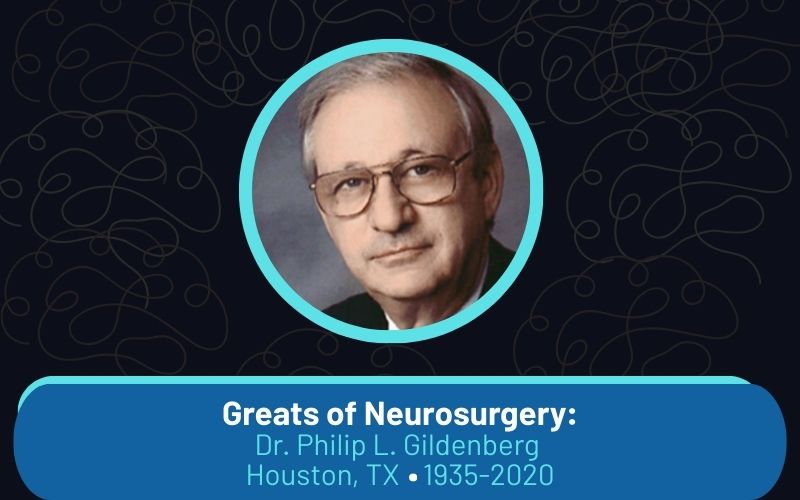Carrying the Frame Forward: Dr. Gildenberg’s Pioneering Role in Stereotaxy

Philadelphia, Pennsylvania, after the end of World War II, was a hotbed of innovation for the field of Stereotaxy. Drs. Speigel and Wycis had developed a frame and a bright young medical student at Temple University, was enchanted and converted. Dr. Philip L. Gildenberg met Dr. Speigel in 1956, according to his own account, and worked throughout his career to develop basic techniques used today for stereotaxy.
Beginnings of Dr. Gildenberg’s Innovation
Dr. Gildenberg started his neurosurgery training at Temple in 1962 and continued to work with Drs. Speigel and Wycis until he graduated and spent a post-graduate year with Dr. Rolf Hassler at the Max-Planck Insitute. After his year in Germany, Cleveland Clinic recruited him just in time for Parkinson’s disease medical treatments to become popularized, leading to a decline in stereotactic surgeries – but coincidentally leading to the growth of his pain practice and the first epilepsy surgery at Cleveland Clinic.
Establishing a Legacy at Arizona and Beyond
Dr. Gildenberg then went on to found the neurosurgery department at the University of Arizona in Tucson in 1972, a post now occupied Dr. Julie Pilitsis (ASSFN President). After dramatic changes in hospital organization in Tucson, Dr. Gildenberg then relocated to the University of Texas in Houston and Baylor where he finished his career.
A Life of Leadership and Lasting Influence
He served as Secretary-Treasurer and President of both WSSFN 1993-97; ASSFN 1999-2001. In 1980, he hosted the first independent meeting of ASSFN in Houston. Along with his wife, Patricia Franklin, Dr. Gildenberg was editor of our journal Stereotactic and Functional Neurosurgery from 1975 until 2002, including the time under it’s prior name, Applied Neurophysiology. On January 15, 2020, Dr. Gildenberg passed away in Houston. His wife and partner in life, joined him shortly after.
Building a Lasting Community for Neurosurgeons
As a surgeon, he popularized the use of the stereotactic frame, passing his skills on to numerous residents and fellows throughout his career as a researcher, educator, and clinician. His stewardship of our Society, providing administrative support, was critical for its continued success – 45 years after our first independent meeting.

By Robert Bina, MD
Banner University Medical Center – Phoenix
References:
Gildenberg, P.L., Krauss, J.K. (2009). History of the Stereotactic Societies. In: Lozano, A.M., Gildenberg, P.L., Tasker, R.R. (eds) Textbook of Stereotactic and Functional Neurosurgery. Springer, Berlin, Heidelberg. https://doi.org/10.1007/978-3-540-69960-6_2
https://www.gallaheramericanfamilyfuneralhome.com/obituary/DrPhilip-Gildenberg
Roberts DW. Philip L. Gildenberg, MD, PhD, 1935-2020. Stereotact Funct Neurosurg. 2020;98(4):286-287. doi: 10.1159/000509972. Epub 2020 Jul 16. PMID: 32674106.
In This Issue
Summer 2025
- President’s Letter: ASSFN Members Drive the Future of Functional Neurosurgery Through Science, Mentorship, and Patient-Centered Innovation
- Greats of Neurosurgery: Carrying the Frame Forward: Dr. Gildenberg’s Pioneering Role in Stereotaxy
- Member Spotlight: Dr. Paul S. Larson
- Next Gen Leaders Wanted: AMPLify Launches Year Two
- Letter Templates for Functional Neurosurgery Procedures
- Empowering Patients with Clear, Accessible Education Materials
- New ASSFN Webinars & Podcasts Focus on Epilepsy Surgery
- Upcoming Events